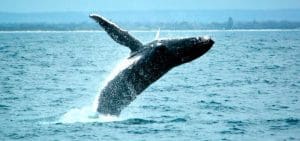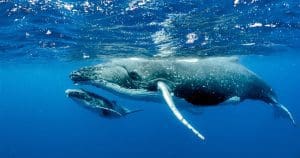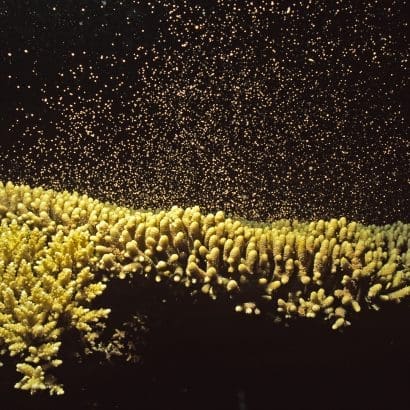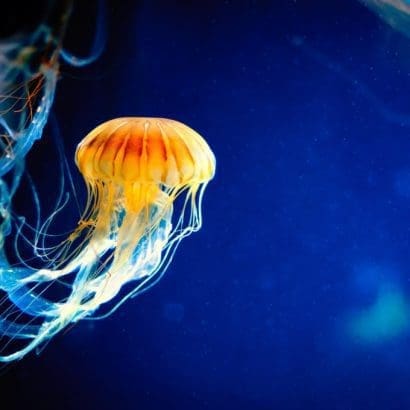
Whale migration is a captivating phenomenon that has intrigued scientists and nature enthusiasts for centuries. The annual journey of these magnificent creatures across vast oceanic distances raises questions about when their migrations occur and where they venture to. Understanding the timing and destinations of whale migration not only provides valuable insights into their behaviors but also offers opportunities for conservation efforts and remarkable wildlife experiences..
In this article, we will delve into the general patterns of whale migration, exploring the timing of their journeys and the destinations they seek. From the cold waters of the polar regions to the warmer breeding grounds, we will examine the factors that shape their migration routes. Additionally, we will discuss the significance of these migrations in terms of feeding, breeding, and the conservation of these incredible marine mammals.
Contents
The migration of whales.
Whale migration is a remarkable natural phenomenon that involves the seasonal movement of whales over long distances. It is a behavior exhibited by several whale species worldwide. The migration patterns of whales are influenced by various factors, including food availability, reproductive needs, and environmental conditions. Here is some general information about the migration of whales:
What is migration?.
Migration is a natural phenomenon observed in various animal species, including birds, mammals, fish, and insects. It refers to the regular, often seasonal, movement of individuals or groups of organisms from one location to another. Migration occurs in response to changing environmental conditions, such as the availability of resources, climate variations, or breeding requirements. Here is some general information about migration:
Purpose of Migration:
-
- Migration serves specific purposes, such as finding better food sources, escaping harsh climates, seeking suitable breeding grounds, or maximizing reproductive success.
- By moving to different locations, migratory organisms can take advantage of favorable conditions and optimize their chances of survival and reproduction.
Types of Migration:
-
- There are various types of migration, including seasonal migration, altitudinal migration, latitudinal migration, and irregular migration.
- Seasonal migration is the most common type, characterized by regular movements between breeding and non-breeding areas.
- Altitudinal migration involves vertical movements within mountains or other elevated terrains.
- Latitudinal migration refers to movements between different latitudes, often associated with changing seasons.
- Irregular migration is less predictable and may occur in response to specific events or local conditions.
Migration Patterns:
-
- Migration patterns can vary greatly among species. Some organisms migrate individually, while others travel in groups or flocks.
- Migration routes can be highly specific, with individuals following established paths or landmarks, often relying on internal compasses or environmental cues.
- Migration distances can range from short distances, such as local movements within a habitat, to long-distance journeys spanning thousands of kilometers.
Ecological Importance:
-
- Migration plays a vital role in ecological processes, such as seed dispersal, nutrient cycling, and genetic exchange between populations.
- It influences the distribution of species and shapes community dynamics in different habitats.
- Migration can also have broader impacts on ecosystems, as it can affect predator-prey relationships, pollination, and the functioning of food webs.
Challenges and Adaptations:
-
- Migration presents various challenges for organisms, including navigating unfamiliar landscapes, crossing barriers like oceans or mountains, and facing predation risks during the journey.
- Migratory species have evolved remarkable adaptations to overcome these challenges, such as the ability to navigate using celestial cues, magnetic fields, landmarks, or olfactory senses.
Migratory whale species.
Migratory whale species are a group of whales that undertake long-distance journeys between different habitats in search of food, breeding grounds, or favorable environmental conditions. These species exhibit remarkable migratory behaviors that span thousands of kilometers and often follow predictable patterns. Here is some general information about migratory whale species:
Common Migratory Whale Species:
-
- There are several well-known migratory whale species, including the humpback whale, gray whale, fin whale, minke whale, and blue whale, among others.
- Each species has its unique migratory patterns and destinations, influenced by factors such as feeding preferences, reproductive needs, and environmental cues.
Seasonal Migration:
-
- Migratory whale species typically follow seasonal migration patterns, moving between their feeding grounds and breeding/calving areas.
- During the feeding season, they inhabit colder, nutrient-rich waters where their preferred food sources, such as krill or small fish, are abundant.
- When it’s time for breeding and calving, they migrate to warmer waters, often closer to coastlines or within protected bays and lagoons.
Migration Routes:
-
- Migratory whale species follow established migration routes that are often passed down from generation to generation.
- These routes can vary depending on the species and the regions they inhabit, but they generally involve traveling along coastlines or utilizing specific ocean currents.
- For example, humpback whales in the North Pacific may migrate from Alaskan waters to breeding areas in Hawaii or Mexico, while gray whales undertake one of the longest migrations, from the Arctic to the coast of Mexico.
Timing and Durations of Migration:
-
- The timing of whale migration varies depending on the species and the specific region.
- Migration can occur annually or on a multi-year cycle, depending on the reproductive and feeding needs of the species.
- The duration of migration also varies, with some whales completing their journey within a few weeks, while others may take several months.
Conservation Significance:
-
- Migratory whale species are of significant conservation concern due to various threats they face, including habitat degradation, pollution, climate change, and human activities such as whaling or entanglement in fishing gear.
- Understanding the migratory behaviors and routes of these species is crucial for their conservation, as it helps identify critical habitats, establish protected areas, and implement effective management strategies.
Migration patterns.
Migration patterns refer to the regular and predictable movements of organisms from one location to another. These patterns can vary across different species and are influenced by factors such as food availability, reproductive needs, environmental conditions, and innate behaviors. Here is some general information about migration patterns:
Seasonal Migration:
-
- Seasonal migration is the most common type of migration pattern observed in many species, including birds, mammals, and fish.
- It involves the movement of organisms between breeding and non-breeding areas in response to changes in seasons and resource availability.
- For example, birds often migrate from colder regions to warmer areas during winter, where food sources are more abundant.
Altitudinal Migration:
-
- Altitudinal migration refers to the vertical movement of organisms within mountainous or hilly regions.
- This pattern is commonly observed in animals that adjust their altitude in response to changing temperatures or food availability.
- For instance, some species of ungulates may migrate to higher elevations during the summer to graze on fresh vegetation and descend to lower altitudes during the winter to avoid harsh conditions.
Latitudinal Migration:
-
- Latitudinal migration involves the movement of organisms between different latitudes.
- It often occurs in response to seasonal changes, such as the availability of food or the need for breeding and reproduction.
- For example, certain fish species migrate from colder polar regions to warmer tropical or subtropical waters to spawn and vice versa.
Irregular Migration:
-
- Irregular migration refers to movements that do not follow a specific pattern or occur on a predictable schedule.
- It can be influenced by various factors such as local conditions, resource availability, or individual behavior.
- Some species may undertake irregular migrations in response to specific events, such as changes in weather patterns or the availability of temporary food sources.
-
- Many migratory species possess remarkable navigational abilities that allow them to accurately follow migration routes.
- They may rely on a combination of celestial cues, magnetic fields, visual landmarks, and even olfactory senses to navigate.
- Some organisms also have an innate sense of direction and can orient themselves relative to the Earth’s magnetic field or other environmental cues.
Distances and duration of the journey.
Distances and duration of the journey refer to the extent and length of time that organisms travel during migration. These factors can vary widely depending on the species, habitat, and purpose of migration. Here is some general information about distances and duration of migratory journeys:
Varying Distances:
-
- The distances covered during migration can range from relatively short to incredibly vast, depending on the species and the specific migration route.
- Some organisms migrate within a local area, moving between different habitats or altitudes within a relatively small range.
- Other species undertake long-distance migrations, spanning thousands of kilometers or even crossing entire continents or oceans.
Species-Specific Examples:
-
- Birds are known for their impressive migratory journeys, with some species flying thousands of kilometers between their breeding and wintering grounds.
- Fish, such as salmon, may travel hundreds or even thousands of kilometers from their freshwater spawning grounds to the open ocean and back.
- Mammals like caribou undertake extensive migrations, covering vast distances in search of food and suitable habitats.
Factors Influencing Distance:
-
- The distance of migratory journeys is influenced by several factors, including the availability of resources, breeding requirements, and environmental conditions.
- Some species may need to travel long distances to reach areas with abundant food sources or suitable breeding grounds.
- Environmental changes, such as shifts in temperature or precipitation patterns, can also influence the distance covered during migration.
Duration of Migration:
-
- The duration of migratory journeys can vary significantly depending on the species and the specific migration route.
- Some migrations can be relatively short, lasting only a few days or weeks, while others can extend over several months.
- Factors such as the speed of travel, stopover periods for rest and refueling, and the overall distance to be covered can influence the duration of the journey.
Adaptations for Long Journeys:
-
- Organisms undertaking long migratory journeys have evolved adaptations to support their endurance and survival.
- They may store energy reserves, such as fat deposits, to sustain themselves during periods of limited food availability.
- Some species may also exhibit physical adaptations for efficient long-distance travel, such as streamlined bodies or specialized wings for birds.


